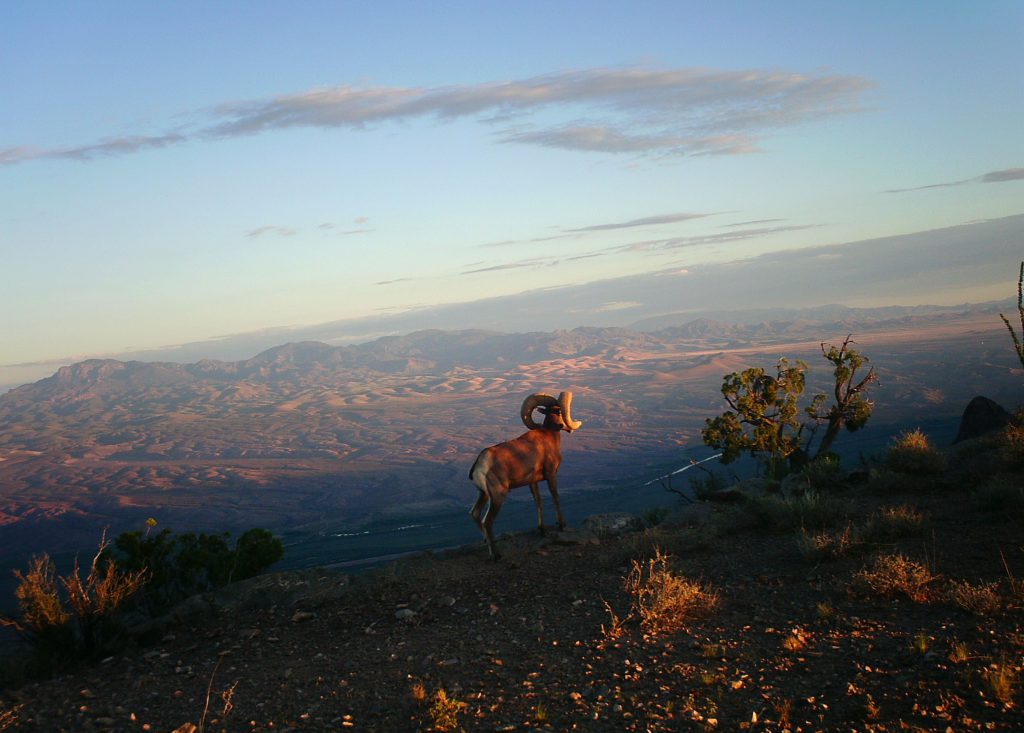DESERT BIGHORN SHEEP RESTORATION AND CONSERVATION INITIATIVE
Due to range-wide declines from overhunting, disease and predation, the desert bighorn sheep was listed as a New Mexico state endangered species in 1980. Starting in 1995 the Armendaris and Turner Endangered Species Fund contributed to desert bighorn sheep recovery by initiating a project to establish a self-sustaining herd of desert bighorn sheep in the Armendaris’ Fra Cristobal Mountains. Population increases through translocation, control of predation, disease management, and research allowed the desert bighorn sheep to be removed from New Mexico’s endangered species list in 2011. The Fra Cristobal population is now the largest assemblage of desert bighorn sheep in New Mexico and was an important factor in the delisting decision.

BOLSON TORTIOSE RECOVERY PROGRAM
Armendaris and Turner Endangered Species Fund are currently working to establish independent, free-ranging Bolson tortoise populations in the northern Chihuahuan Desert. To prevent the extinction of the Bolson tortoise, Armendaris staff are captively breeding individuals to increase the tortoise population and protecting juveniles in a robust head-start program until they reach predator-resistant size. When the Bolson tortoises reach sufficient size, they will be released onto the property to mature and establish wild populations.
APLOMADO FALCON RESTORATION PLAN
Listed as an endangered species in 1986, the aplomado falcon suffered significant population declines due to such factors as habitat degradation and alteration. TESF collaborated with The Peregrine Fund and the U.S. Fish and Wildlife Service on efforts to reintroduce falcons to the Chihuahuan grasslands of the Armendaris. However, by 2013, despite considerable effort, it was apparent that ecological circumstances precluded restoration of a population and field efforts on behalf of the species were terminated.
